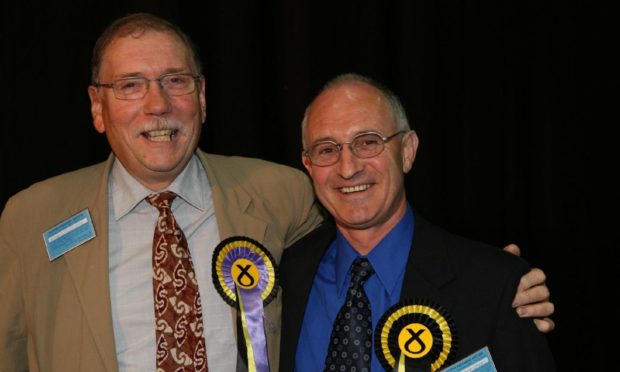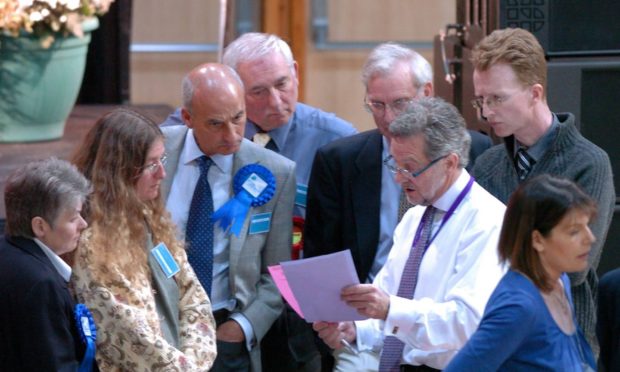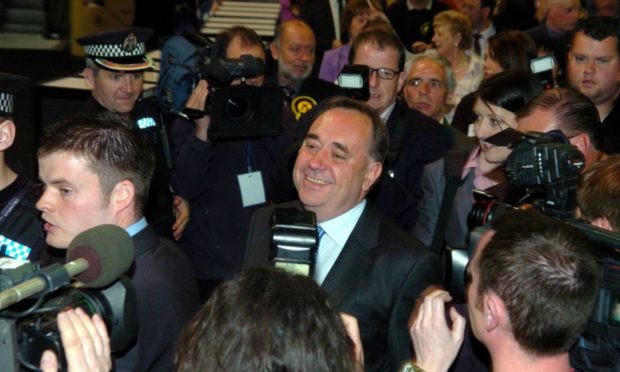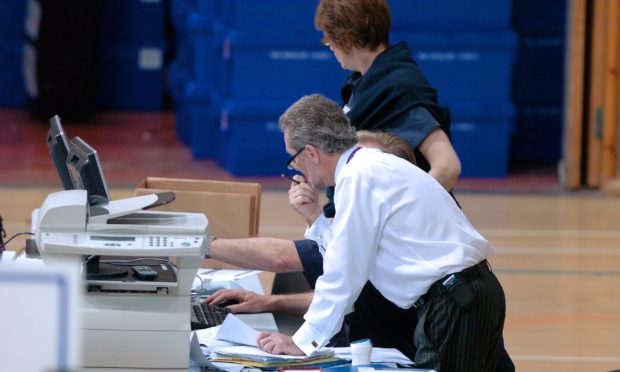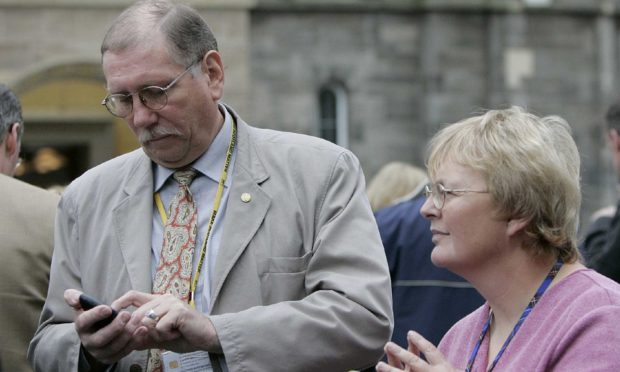The tension was palpable for those inside Inverness Leisure Centre the last time Scotland waited with bated breath for regional list results to be declared.
With Labour and the SNP locked in the tightest of races, the eyes of the nation fell on the Highland capital as Holyrood’s final seven MSPs were named on May 4, 2007.
Late in the afternoon, rumours began to circulate that Alex Salmond’s bid to become first minister was all over, and that Labour had done enough to remain in power.
Returning officer Arthur McCourt had taken the candidates aside to tell them that four Labour MSPs had been elected on the list, alongside two Tories and one Green.
Five minutes of celebration – half an hour of confusion
Christine Conniff, Labour’s fourth list candidate, punched the air in celebration.
But there were mixed emotions for Green MSP Eleanor Scott, who was heading back to Holyrood at the expense of her partner, Rob Gibson of the SNP, who had missed out.
That was all about to change, however.
The SNP’s David Thompson had been watching the figures emerging since Thursday night and knew immediately that something was wrong.
He challenged the result, causing confusion for everyone watching on.
Among those in the hall was Fergus Ewing, who had a face like thunder as word of the apparent blunder rippled through the leisure centre.
Mr McCourt disappeared and more than half an hour passed as the numbers were recalculated.
When he returned, at about 5.30pm on the Friday, the correct results were announced – three Labour MSPs, two SNP and two Conservative.
It meant that the SNP had won a Holyrood election for the first time, that Labour’s stranglehold on Scottish politics had been broken, and Mr Salmond was to become first minister.
For Ms Scott, meanwhile, it was confirmed that she had not been re-elected after all, but her partner, Mr Gibson, had been.
‘Astounding’ moment
Kit Fraser, of the Publican Party, observed the events close at hand.
He said at the time: “If it hadn’t been queried Labour would now be the majority party.
“It was astounding. We were gutted for the candidate who was a MSP for five minutes.”
Ms Conniff quickly recovered from her brief moment of excitement.
She said: “It was a long day and had dragged on. Everyone was tired. If I had been less tired I would have known right away it was wrong.
“I had a lot of support from the other parties. They felt worse than I did about it.
“There I was holding the balance of power in Scotland for a few minutes.”
In 2007, Mr McCourt said: “One of the columns in the spreadsheet didn’t carry out one of the sums. The data was in, but one column wasn’t added in.
“As soon as the discrepancy was pointed out by candidates, we went back and re-ran the programme and also did a manual check.”
He added: “There were people who had been working since seven on Thursday morning until 5pm the next day.
“Regardless of how well defined the processes, it is inevitable that human error crept in.”
